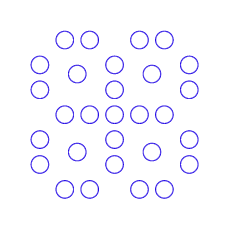Big Blue’s Sajid Chowdhury highlights opportunities for programme evaluators to collaborate with digital technology experts.
About eight years ago, while working at a UK consultancy, I had an opportunity to support a very experienced evaluator of a livelihoods programme in Tajikistan.
He said communications support on evaluations was rare for him. Normally, he would simply write an evaluation report and submit it to the funding team. That was about eight years ago.
The evaluation landscape has changed since then. As a whole, project funders and evaluators increasingly seek communications-related activities.
Evaluation activities and reporting are now more regularly supported by digital tools to represent results and data.
Formats for data and results are now more varied. Project funders are now generally more interested in syntheses of complex and technical data.
Data visualisation converts complex language and numbers into accessible products that non-technical experts can understand easily.
Refreshingly, there is a greater focus on openness and transparency around evaluations themselves. Funders are increasingly willing to share evaluation findings online with wider audience groups.
In addition, funders are increasingly willing to share evaluation findings as they happen, closer to real time rather than only at the end of an evaluation. This updated approach provides more opportunities for adaptation.
We have been fortunate to support evaluations in several countries recently, connecting with citizens and project participants to capture their experiences. Our funders are eager to experiment with film, photography, casual candid interviews, and communication through digital platforms. The evolution is exciting.
Overall, we are seeing the positive impact sector take inspiration from the private sector. Technology plays an increasing role in evaluations. The comprehensive full-length evaluation report still exists, though now more often accompanied by in-the-moment evaluation reporting and more short-form products.
Communication, sharing, accessibility for non-technical audiences, and packaging now play bigger roles in the conversation. That is really exciting for us in the space.
